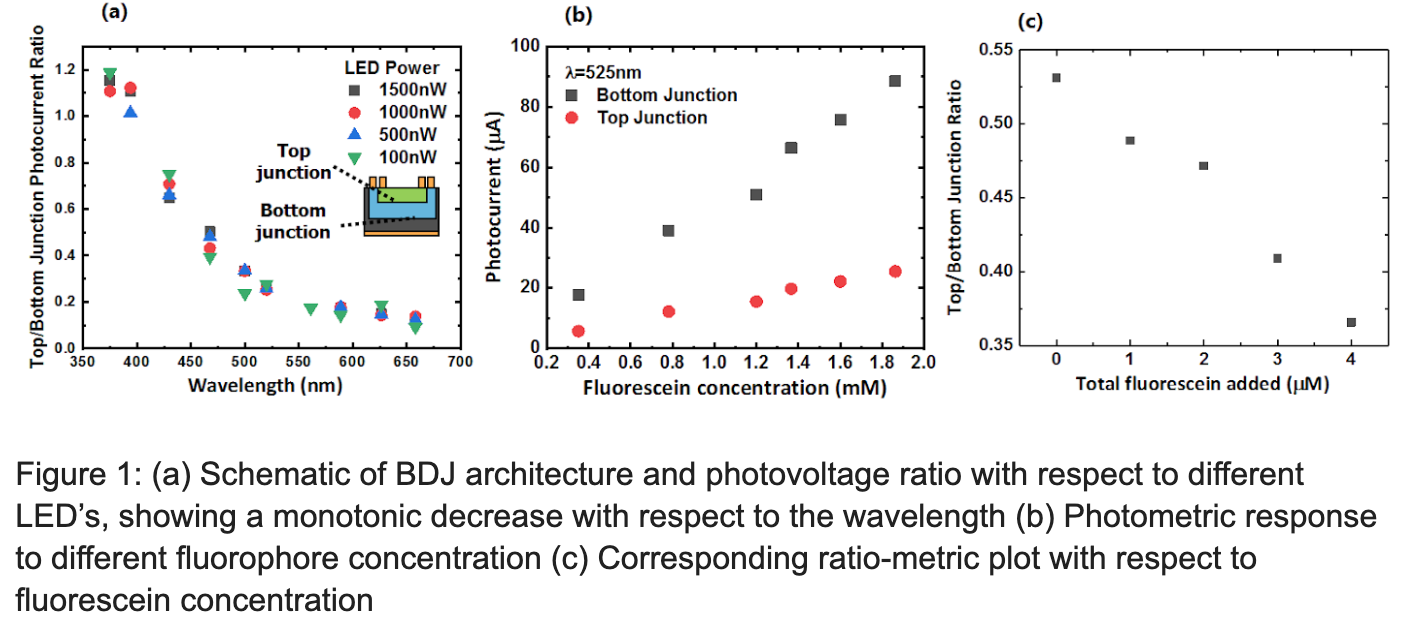
In this work, we are developing an integrated optical detector for use in continuous glucose monitors (CGM’s). Fluorescence-based optical sensing of biology offers sensitivity and specificity for the measurement of analytes of interest and has been thus successfully commercialized and employed for a plethora of research applications. Ratiometric optical sensing is especially preferred over a single color fluorescence measurement platform because of its insensitivity to the light scattering, surface reflection, and radiation fluctuation. However, the macro-scale optical instrumentation required to perform optical sensing – including lasers, lamps, filters, objectives, lenses, and scanners – have limited the utility of for on-body or point-of-care applications. Therefore, we are developing a ratiometric optical sensing platform for CGM’s by integrating silicon (Si) photodetector into a system that can sample fluid (i.e., microneedle array), emit light (i.e., LED), and contain a biological sensor. The principal focus of this work is the development of a robust, multi-junction silicon photodetector that can be used as a fluorescence sensor in diagnostic applications. Furthermore, we are designing the detector with a customized absorption filter that will restrict the UV light conversion at the shallow surface of the detector to further improve the signal to noise ratio between 400-550 nm. To date, we built a silicon photodetector compatible with the emission spectra of two of the most ubiquitously used fluorescent molecules – DAPI(4′,6-diamidino-2-phenylindole) and FITC (fluorescein isothiocyanate) by implementing dual junctions in silicon at the two wavelengths of these fluorophores (430 nm and 525 nm). Our detector can be used for numerous applications, such as a wavelength (Fig.1a), photometric (Fig.1b), and ratiometric sensor (Fig.1c).